A common question beginning houseplant enthusiasts ask is about houseplants and pet safety. This is an incredibly important issue to address as some houseplants, such as lilies and sago palms, are extremely toxic and can have a devasting impact when brought into homes with curious pets. However, though the houseplant trade is full of plants that have some level of toxicity, there are plenty of pet-safe plants to choose from. Opting to keep only non-toxic plants in your home is a wise choice, particularly if you have pets or small children who have a tendency to let curiosity get the best of them.
Read on for our top choices of pet-safe houseplants and why these plants will make a great addition to your home.
What Does “Pet Safe” or Non-Toxic Really Mean?
While certain houseplants may be considered to be “non-toxic,” that does not mean that you should allow your cat or dog to munch on them indiscriminately. Although technically “non-toxic” and non-fatal, many plants can and will cause intestinal distress if consumed in large quantities. Symptoms such as diarrhea, stomach cramps and other signs of digestive upset can still occur if your pet manages to consume a large amount of these plants, so be aware and, if possible, locate plants out of reach of pets and small children. Not only with this ensure that your pets are safe, but it will keep your plants happier and looking better as they won’t be subject to the damage pets can cause.
Our Favorite Pet Friendly Houseplants
While this is by no means an exhaustive list, below are our top choices for pet-safe, non-toxic houseplants that will make a welcome addition to your home. We’ve selected a wide range of plants, from cacti to tropical specimens, and included a bit of information about what makes them special and how to care for them to help you choose the right plants for your pet-friendly home.
Spider Plant (Chlorophytum comosum)
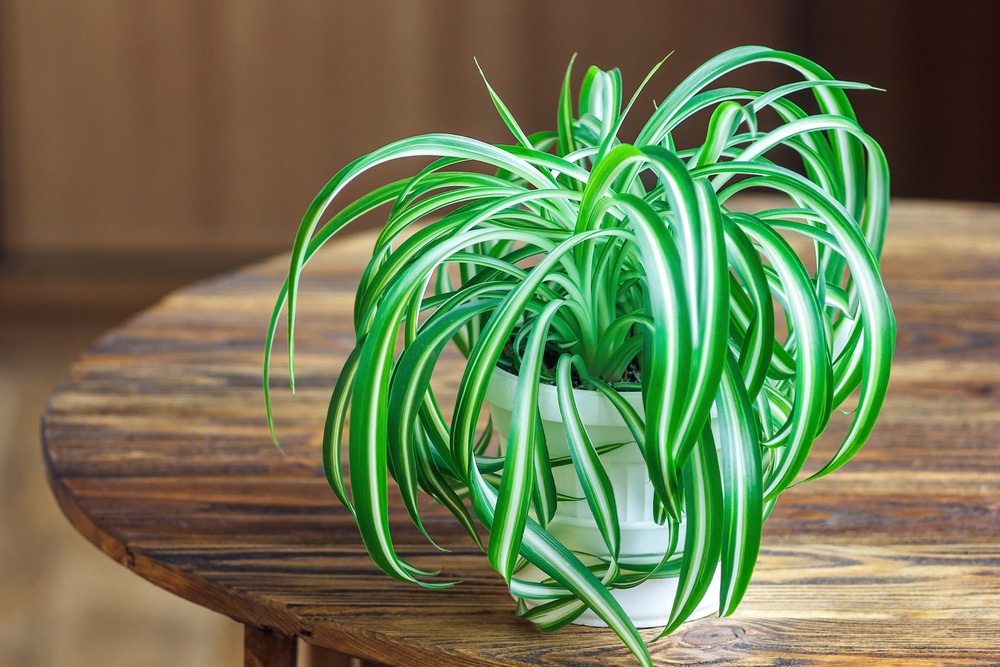
No pet-friendly plant list would be complete without mentioning the ever-popular spider plant. This easy to care for plant comes in solid green and variegated varieties and prefers bright, indirect light and moderate watering, generally requiring weekly watering during the growing season. One of the easiest plants to propagate at home, under the right conditions, spider plants will flower small, white flowers and produce an abundance of “pups,” or baby spider plants, that can be easily potted up to share with friends and family.
Prayer Plant (Maranta leuconeura)
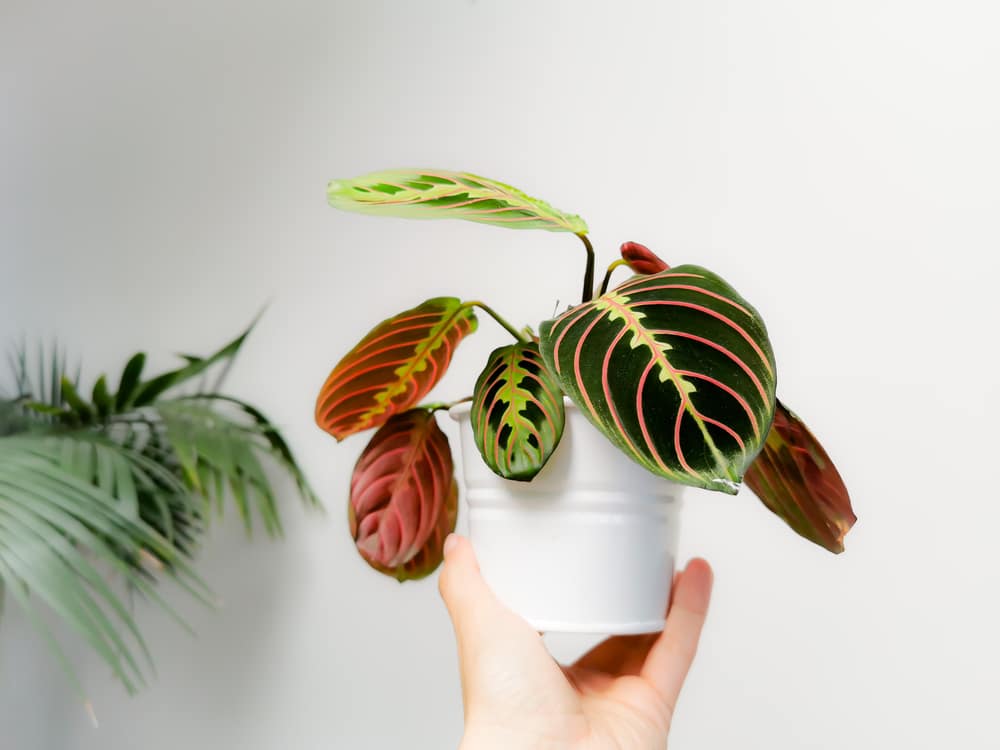
Another beautiful plant with simple needs, prayer plant is a crowd favorite, in large part due to its patterned and brightly colored, red and green leaves. Named after the unique way its leaves move to follow light throughout the day, prayer plants’ leaves fold upwards at night as if in prayer. Preferring medium to bright indirect light, avoid placing your prayer plant in direct sunlight to prevent leaf fading and scorching. When happy, prayer plants will flower small, delicate, lavender blooms.
African Violet (Saintpaulia spp.)
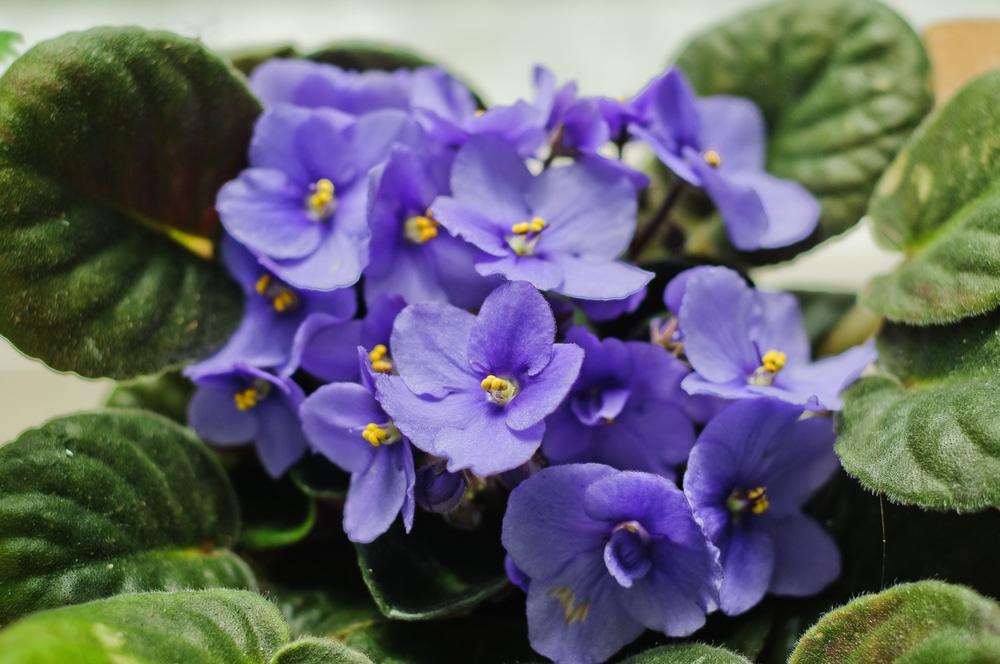
Cheery African violets are sure to put a smile on your face when added to a coffee table or placed beside a sunny, kitchen sink. With thick, furry leaves, African violet flowers come in a range of colors, from white to pink to dark purple. Although easy to care for, African violets do best when potted in a soil designated specifically for them, while fertilizer marketed for African violets can keep them looking in tiptop shape. When watering your violets, allow your plants to dry out between waterings to encourage flowering and avoid getting water on plant leaves, which can cause spotting.
Christmas Cactus (Schlumbergera bridgesii)
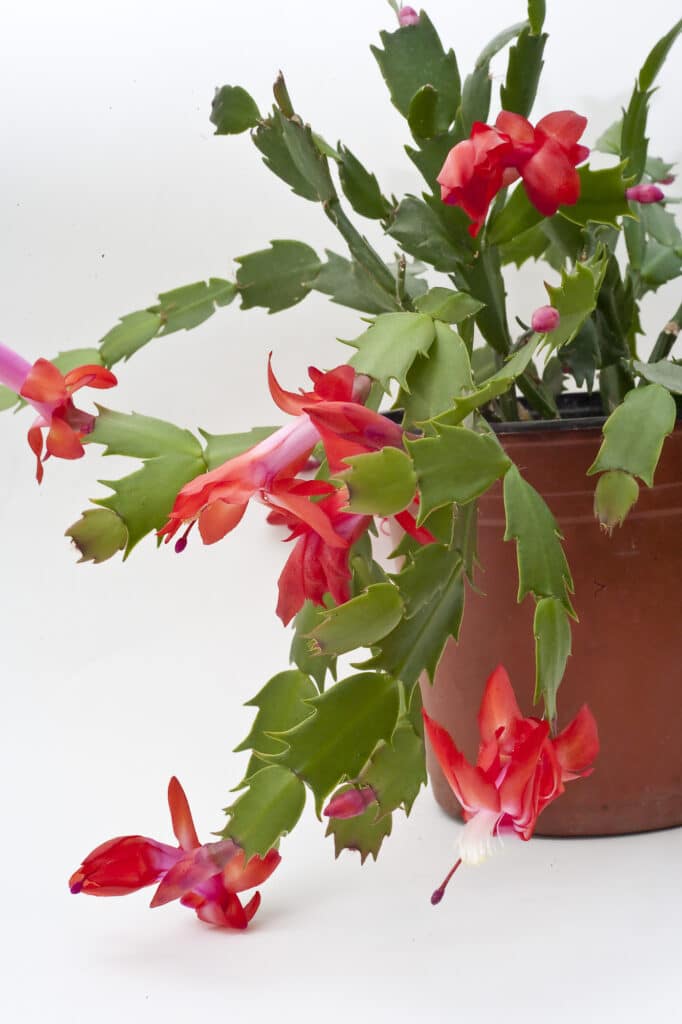
Christmas cacti’s name is a bit of a misnomer as these plants are technically succulents. Growing in fleshy, green segments, Christmas cacti are named after the time when they bloom, which is generally around the depths of winter, from November to January. While blooms can come in white or yellow, you are most likely to spot a Christmas cactus with pink blooms, that are quite large and tropical-looking. As a succulent, Christmas cacti need minimal water, preferring to be watered approximately every 3 to 4 weeks, or when the top third of soil is dry to the touch.
Velvet Plant (Gynura aurantiaca)
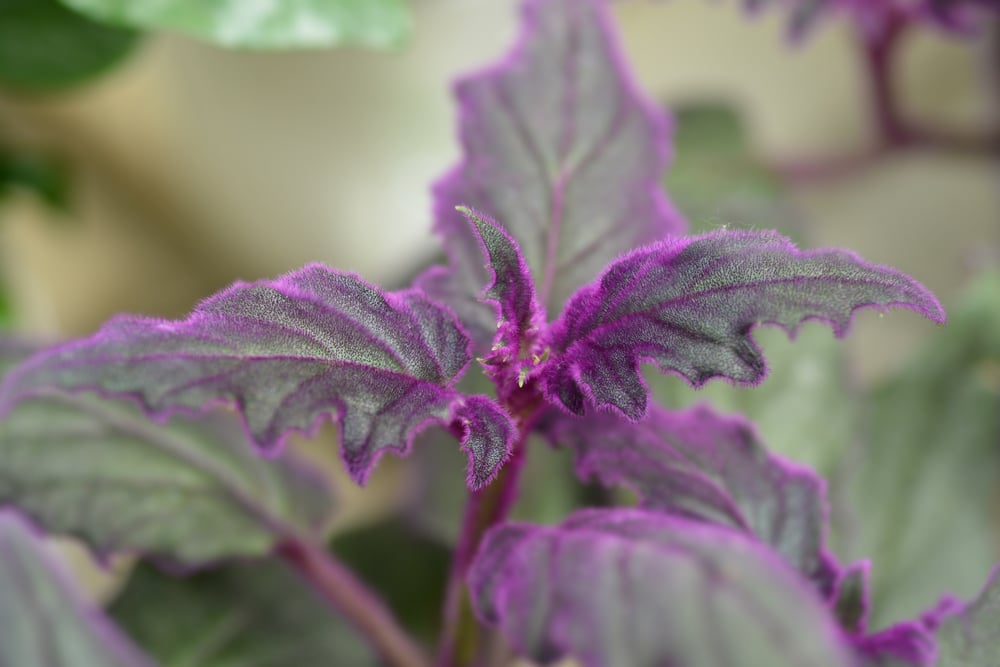
A unique little plant, velvet plant, also known as purple passion plant, has fuzzy, dark purple leaves that look particularly vibrant in the sun. Growing in a vining or trailing manner, velvet plants can be grown in hanging baskets or kept well-pruned for a more upright growth habit. A member of the daisy family, velvet plants will bloom small golden-orange flowers that contrast well against their dark foliage. Preferring bright, indirect light, plants will lose their purple coloration if kept in inadequate lighting, while bright, direct light can cause leaf scorching. A relatively short-lived plant, velvet plants only live about 3 to 5 years; however, they propagate easily in water allowing you to keep your velvet plants growing, generation after generation, with little effort.
Moth Orchid (Phalaenopsis spp.)
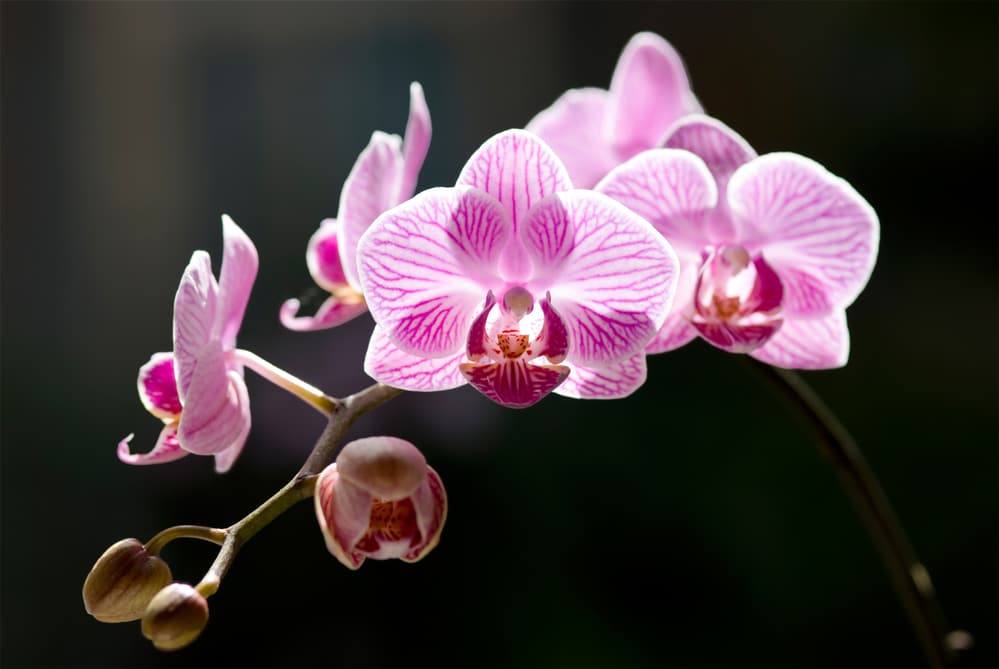
When people hear the word “orchid,” they often think of difficult and demanding plants with elaborate care requirements. Although this may be true of some orchid varieties, the moth orchid is one of the easiest to care for orchids and is readily available for purchase at many grocery stores and garden centers. A native of Asia and Australia, moth orchids grow as epiphytes on trees and so prefer a well-draining, bark-based substrate marketed for orchids. With blooms coming in white, yellow, salmon, pink and purple, moth orchids add elegance to any room and, as they can tolerate some shade, look particularly striking when placed on a coffee table for a pop of color.
Boston Fern (Nephrolepis exalta bostoniensis)
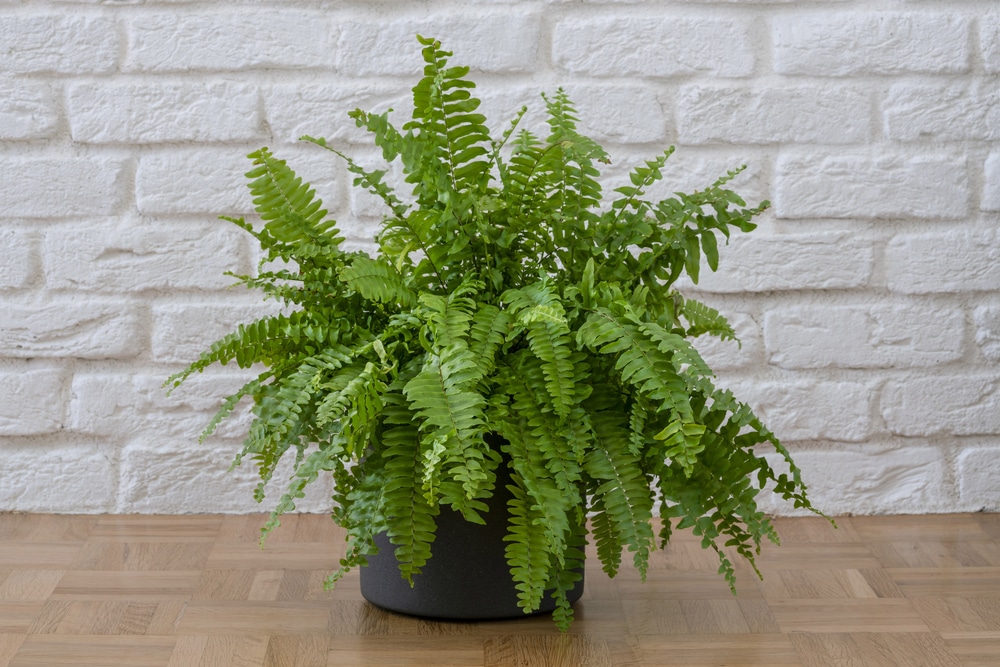
Lush, green Boston ferns add color and interest to living rooms and bedrooms where their foliage lends a cozy and traditional feel to décor schemes. Like other ferns, Boston ferns require high humidity levels and should be placed next to a humidifier, misted daily or perched on top of a pebble tray. If you have a brightly lit bathroom, Boston ferns would be the ideal plant to keep there, as low humidity levels can cause these plants to drop leaves and turn yellow. Preferring bright, indirect light and consistently moist soil, Boston ferns have low fertilizer needs and only need to be fed several times a year for optimal growth.
Ponytail Palm (Beaucarnea recurvata)
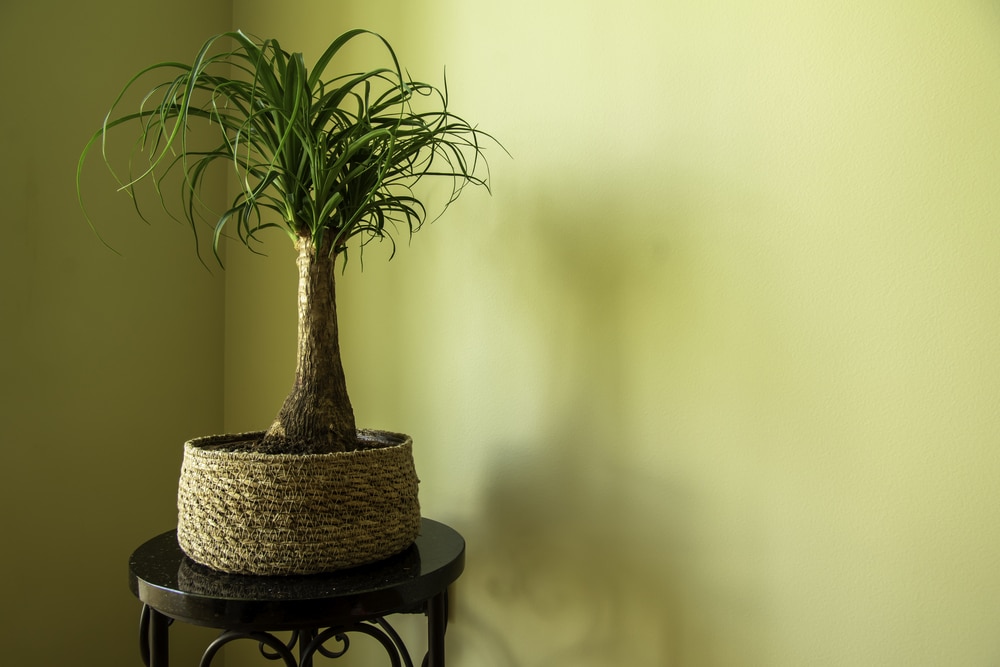
Funky ponytail palms are a perennial favorite, and it’s no wonder why. With long, green fronds perched atop a bulbous “trunk,” ponytail palms look like something straight out of Dr. Seuss. An easy-care plant, ponytail palms are actually not palms at all, but are more closely related to yucca and agave. Native to Mexico, ponytail palms prefer bright light and minimal moisture and should only be watered when the top 2” of soil are completely dry to the touch.
Gold-Fish Plant (Hypocyrta nummularia)
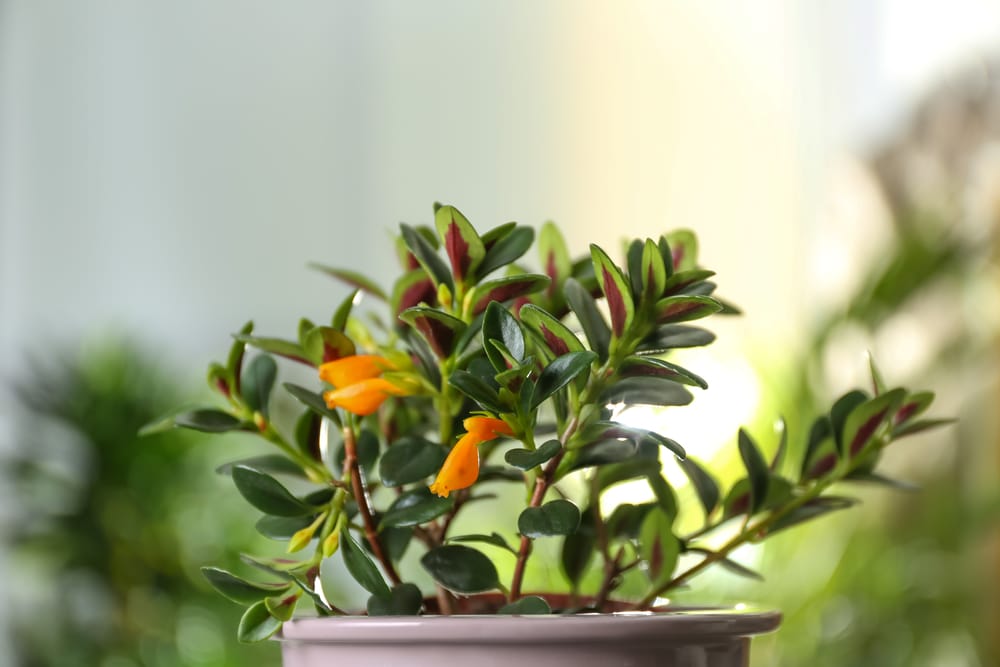
Another fun plant with unique charm, gold-fish plants are named for their bright orange, tubular blooms that are said to resemble the shape of pet goldfish. With dark green, waxy leaves, gold-fish plants have long and trailing growth habits and look particularly great when potted in a hanging basket or allowed to cascade down a hanging shelf. Blooming from spring to summer, encourage your goldfish plant to branch and grow more fully by pinching off growing tips from time to time.
Living Stones (Lithops naureeniae)
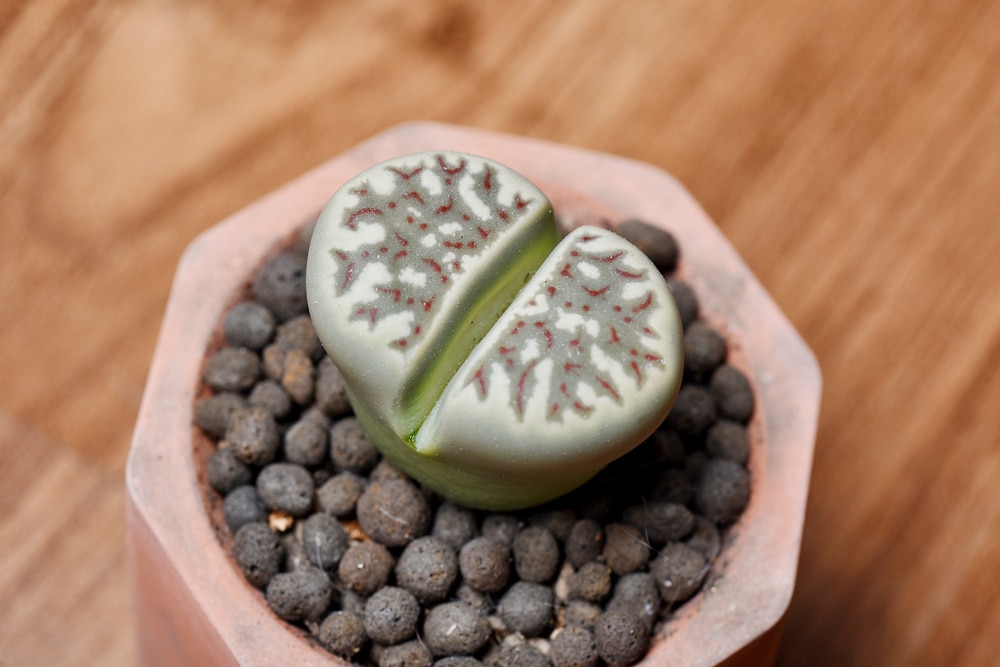
Natives of South Africa, lithops are both the easiest and most difficult succulents to keep happy. Their name comes from two root words: lith-, meaning “rock,” and -opsis, meaning “similar to,” which refers to lithops’ appearance which resembles a rock. Lithops’ unique shape is all about water conservation as lithops in the wild may never actually receive rain but can get all of the moisture they need from occasional fog. If you intend to keep lithops, the old adage, “less is more” is key – you’ll want to avoid tending to them as much as possible as they thrive on neglect. Requiring a very specific watering schedule, lithops should not be watered in summer or winter, and should be watered only lightly in spring and fall.
Money Plant (Pachira aquatica)
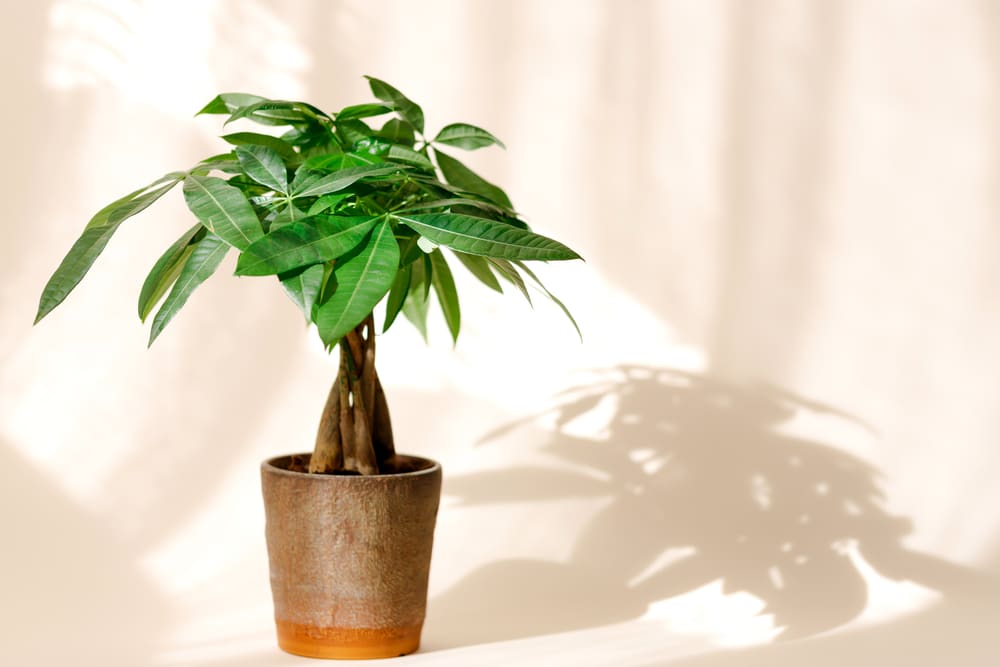
Money plants are actually trees that are naturally found in the swampy areas of central and South America. Said to bring prosperity and good fortune to homes, money plants are frequently given as birthday presents and housewarming gifts. Requiring bright, indirect light and high humidity levels, money plants do best when their leaves are kept moist and their roots are kept relatively dry and potted in well-draining soil.
Sweetheart Hoya (Hoya kerrii)
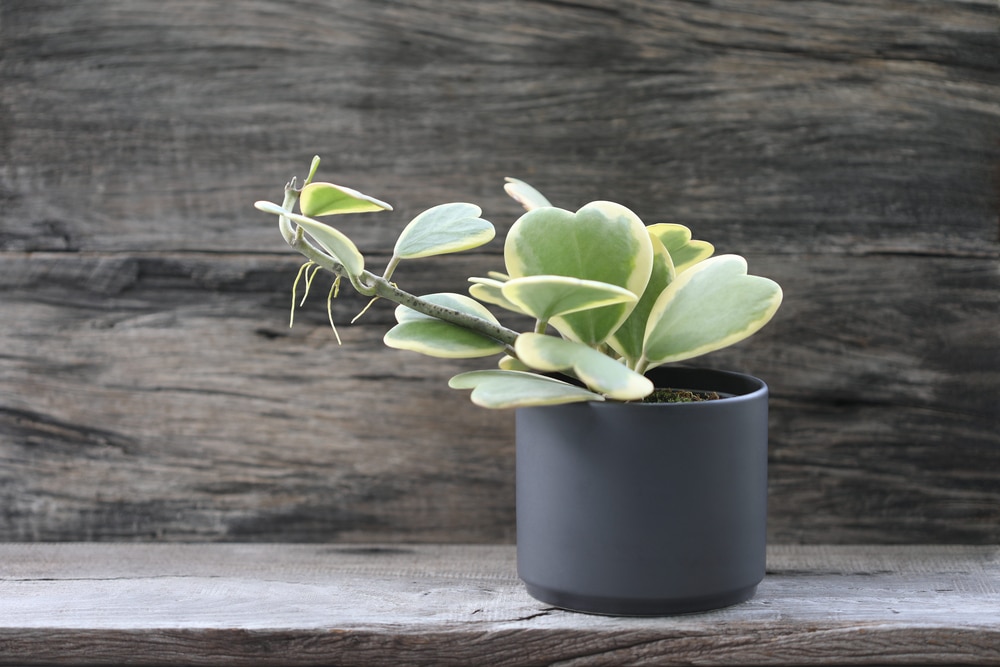
Hoya kerrii are prized for their darling, heart-shaped leaves and are frequently given as Valentine’s day gifts as a result. A slow growing plant, with proper care, sweetheart hoyas can grow quite large (reaching up to 13’) and look particularly nice when placed in a hanging basket. Hoya’s large waxy leaves are adept at water conservation so that your hoya only needs to be watered twice a month or less. When kept under the correct conditions, expect your hoya to bloom large, white, fragrant blooms. If you want to purchase a sweetheart hoya, look for plants with more than one leaf as many nursery will sell a single-leaf hoya cutting, which will only remain as a single leaf and will never grow into a full plant.
Old Man Cactus (Cephalocereus senilis)
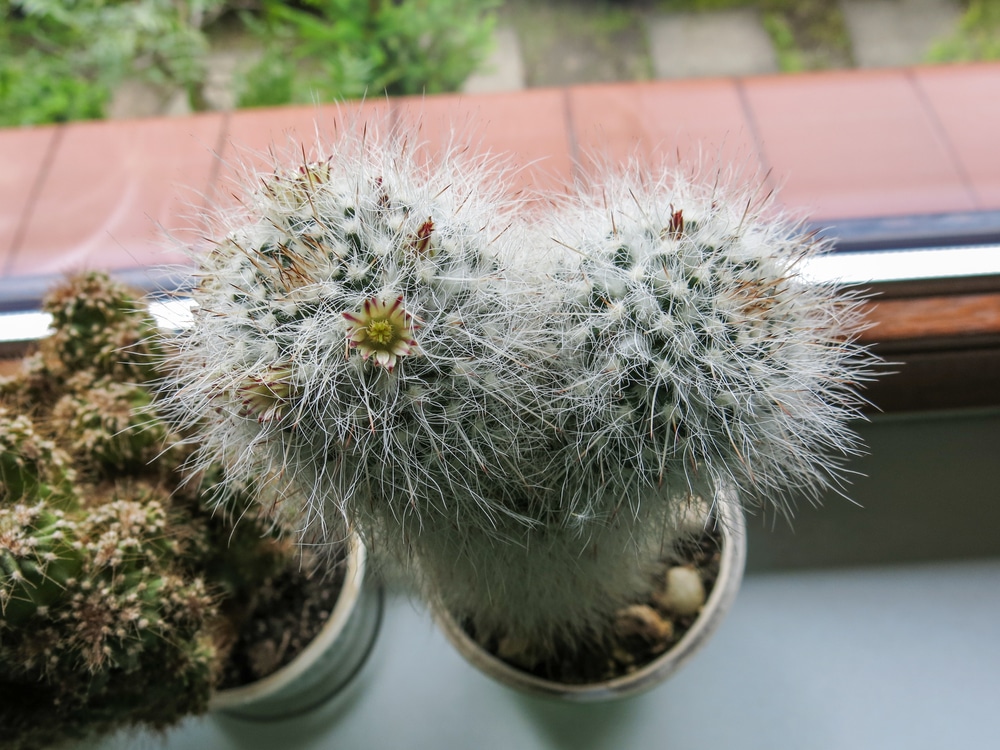
If you’re looking for an easy-care cactus with lots of character, old man cactus is for you. Instead of sharp spikes, old man cactus is covered in soft, flowing, white hairs, which are said to resemble an old man’s beard. As with other cacti, old man cacti require minimal watering and bright light and will grow happily for many years under these conditions.
String of Turtles (Peperomia prostata)
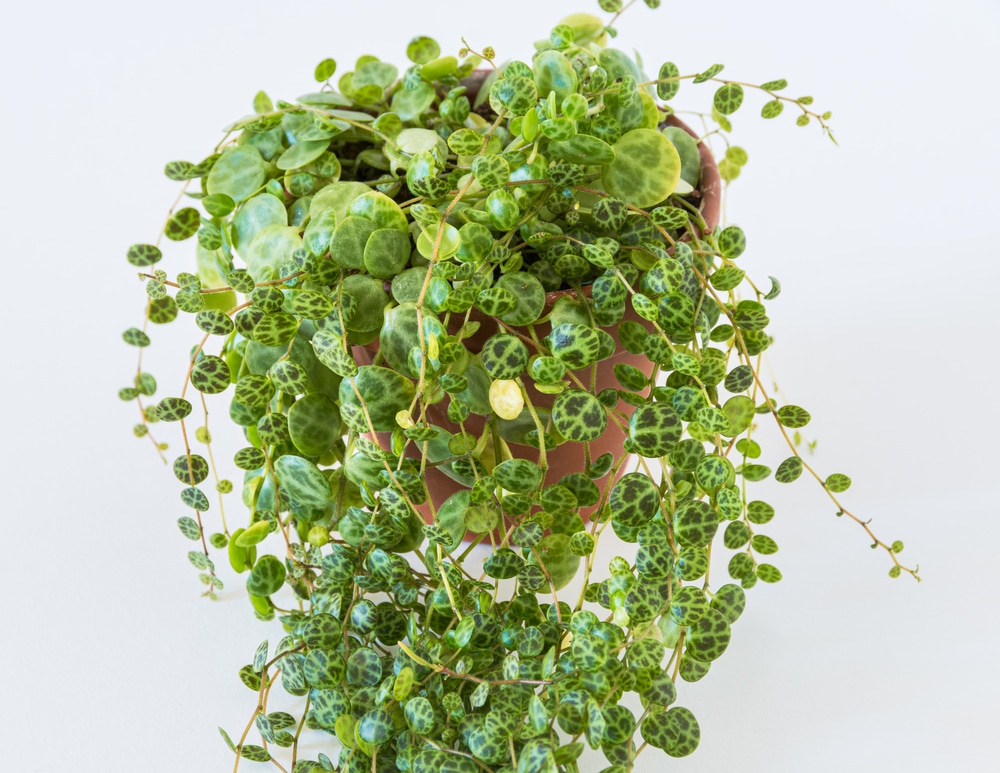
A wildly popular plant among houseplant enthusiasts, string of turtles is a succulent plant hailing from the steamy rainforests of Brazil. A slow growing plant, string of turtles’ highly patterned leaves lend to its allure, while its small size and trailing growth habit make it well-suited for both fairy gardens and hanging baskets alike. Requiring bright, indirect light, overwatering can be a problem with this plant so be sure to allow soil to dry out between waterings to prevent root rot.
Nerve Plant (Fittonia albivenis)
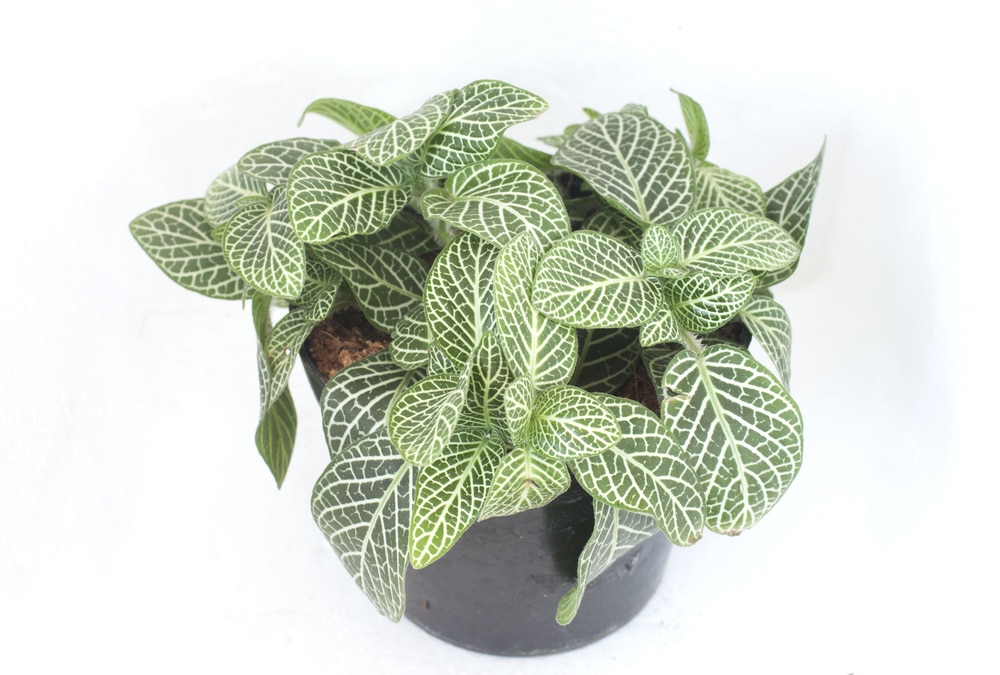
Nerve plants are not for the faint of heart and can cause a lot of frustration if you’re not prepared for their finicky habits. However, with a little care and know-how, nerve plants are a fun and gorgeous plant to keep. While frequently found in silvery-white coloration, nerve plants can also come in pink, red, white and green. The trick to keeping your nerve plant happy is to provide it with consistently high humidity levels, such as can be found in terrariums. If you don’t want to keep your nerve plant in a terrarium, be sure to mist it daily, add a humidifier or place your plant on a pebble tray to ensure adequate humidity levels.
Lady Palm (Rhapis flabelliformis)
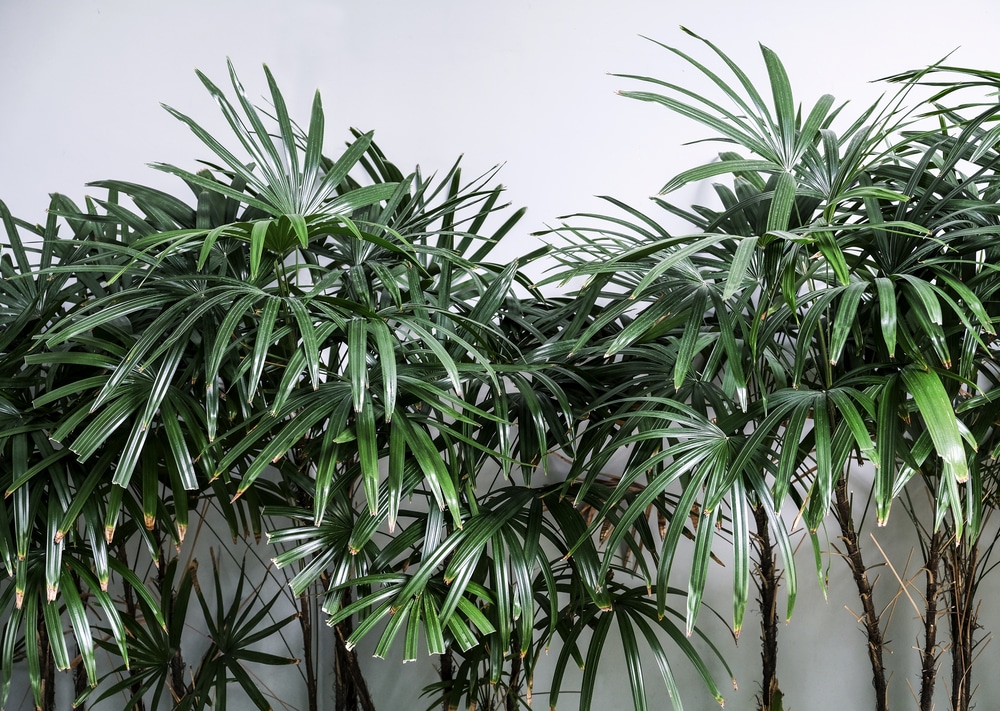
Traditional lady palm adds a formal, elegant touch to any room while its fan-shaped leaves offer a bit of a tropical feel. A relatively easy to care for plant, lady palms prefer indirect sun; however, they do require higher humidity levels of at least 50%, so consider placing your palm on a pebble tray or adding a humidifier to your room. If your palm leaves start to brown at the edges, lack of humidity is likely to blame.
Rattle Snake Plant (Calathea insignis)
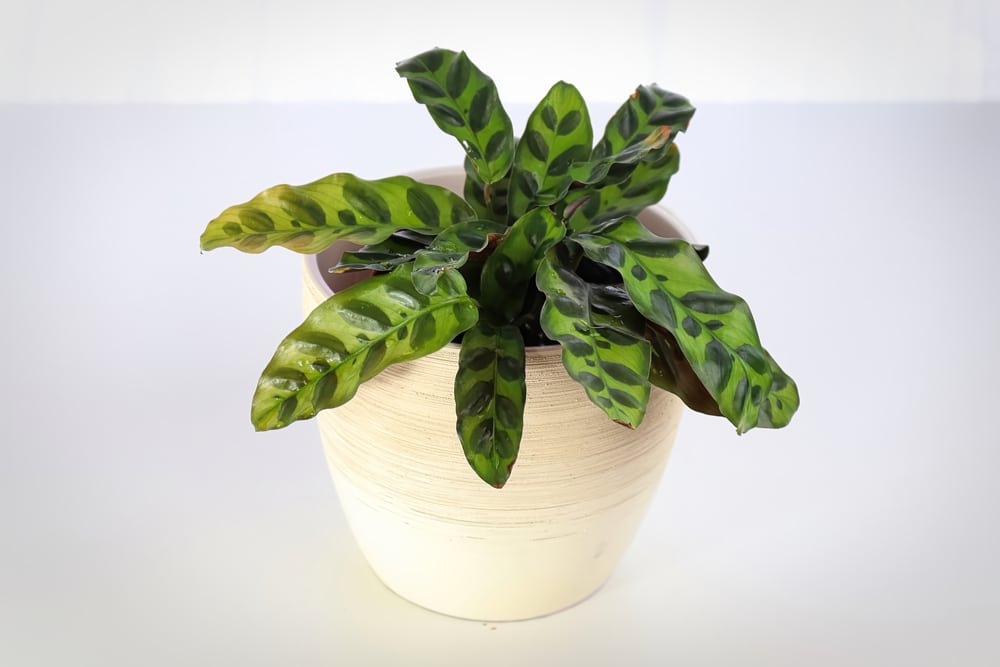
A native of Brazil, rattle snake plants are valued for their highly patterned leaves that are said to resemble the scales on a rattlesnake. Though lovely, rattle snake plants are not well-suited to beginner gardeners as they require higher than average temperature and humidity levels. To keep your plant happy, ensure frequent waterings throughout the growing season, keep your plant away from the dry air and drafts created by home heating and cooling elements, increase humidity levels with a humidifier or pebble tray and maintain home temperatures above 60°F.
False Aralia (Dizygotheca elegantissima)
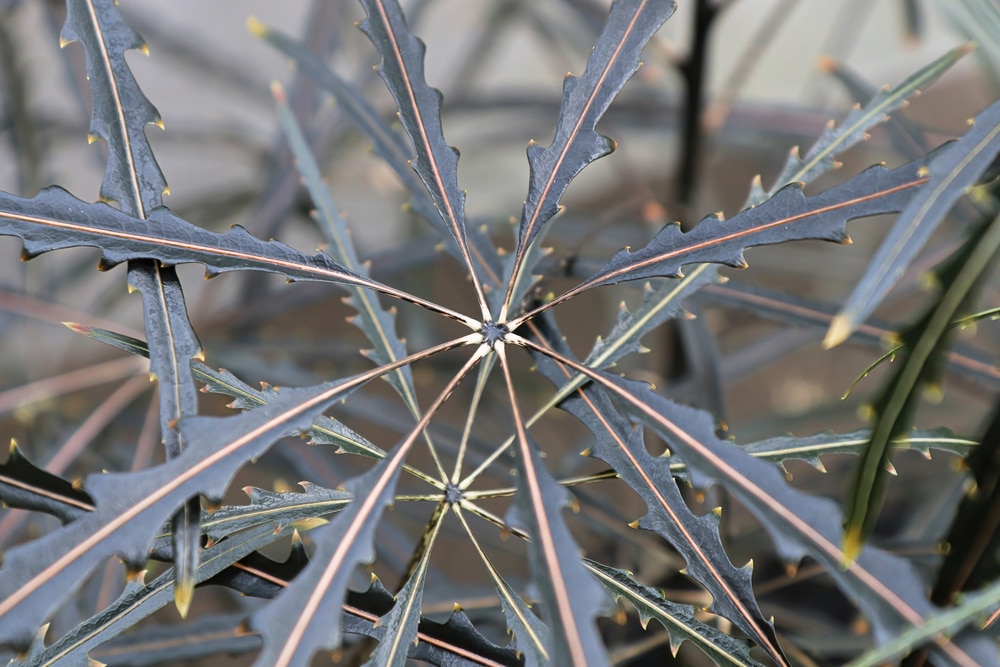
Tall, stately aralias are known for their long, serrated, dark green leaves that add color and interest to your room. While often purchased as a small, potted plant, aralias can grow up to 6’ tall as houseplants. Requiring bright, indirect light, water your plant when the top 1” of soil is dry to the touch. If you notice your aralia beginning to drop leaves towards the bottom, underwatering is likely the culprit so it might be time to increase your watering frequency.
Haworthia (Haworthia spp.)
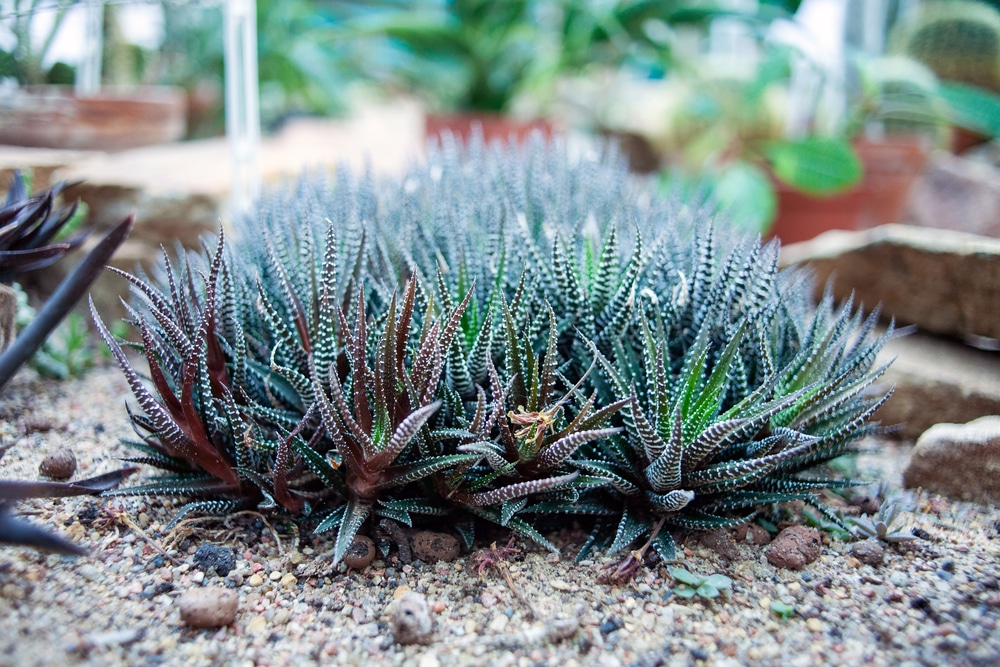
If you love the look of aloes but you have pets, opt for haworthia instead. While aloes are known to be toxic to cats and dogs, haworthia are pet-safe, while their pointed, architectural spines give off the look and feel of aloes. As succulents, haworthia have simple needs, requiring bright, indirect light and minimal, monthly waterings. For more variety, check out the different species of haworthia – there are many different shapes, sizes and colors to choose from!
Swedish Ivy (Pilea nummulariifolia)
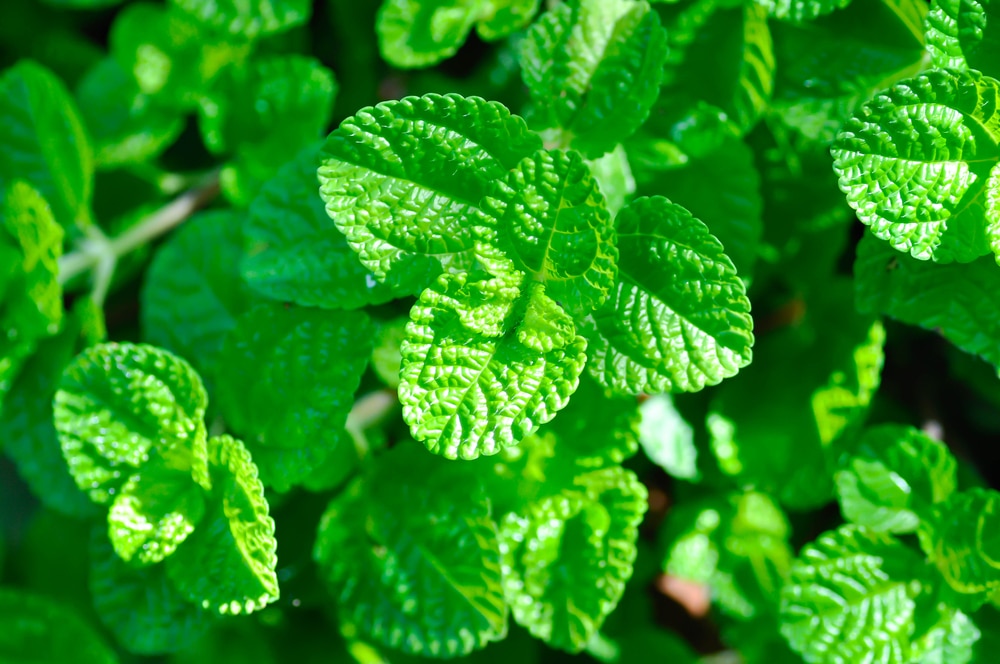
Swedish ivy is a lovely trailing houseplant that looks great in a hanging basket or when used as a “spiller” plant in a container garden. A super simple plant to keep, Swedish ivy grows rapidly, prefers bright, indirect light and does best when soil is allowed to dry out between waterings. Prized for its brightly colored, glossy, green leaves, Swedish ivy will bloom tubular flowers in spring and summer. For healthier plants, fertilizer your ivy frequently to support its rapid growth rate.
Staghorn Fern (Platycerium bifurcatum)
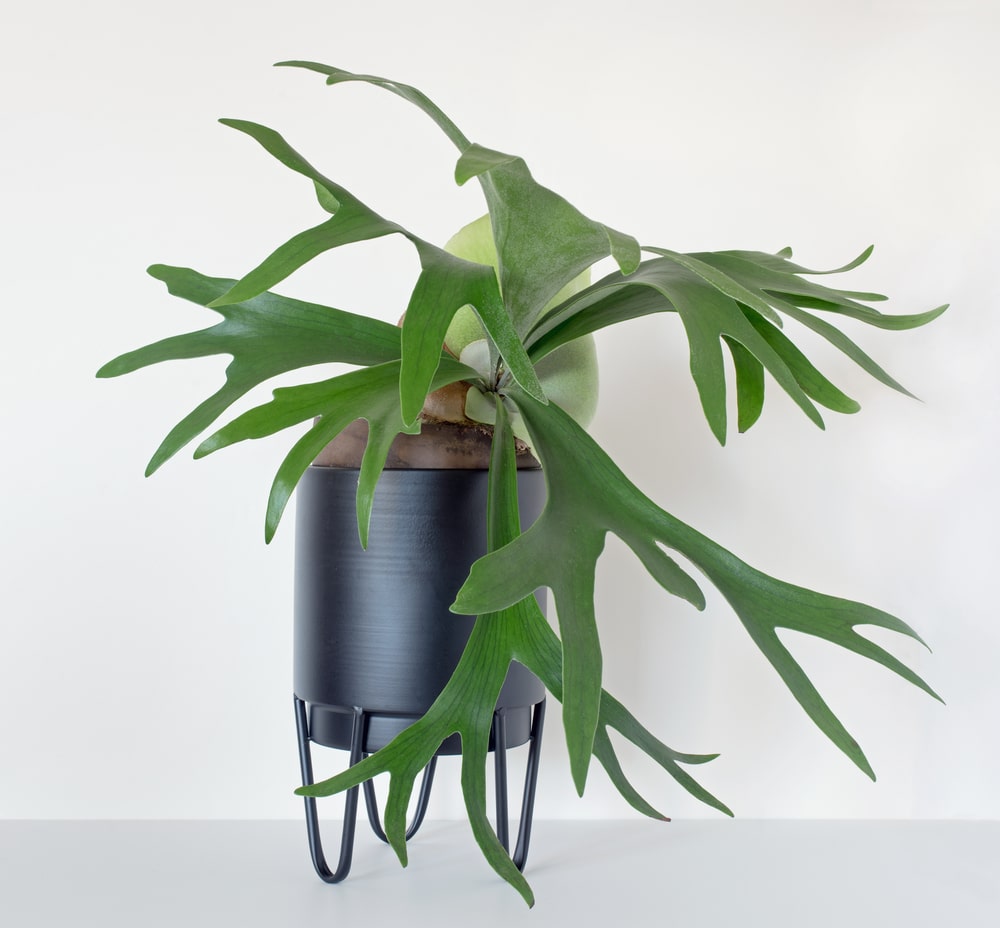
Staghorn ferns’ unique shape is said to resemble the horns of a stag. This resemblance is only accentuated when staghorn ferns are displayed on a wall-mount or hanging basket, which make for fun craft projects for the DIY-minded among us. Like other ferns, staghorns require high humidity levels of between 70 and 80%, so be prepared to mist your plant frequently or add a humidifier to your setup. Place your fern in bright, indirect light, allow the substrate to dry out between waterings and apply a monthly fertilizer to keep your fern happy and thriving for years.
Cast Iron Plant (Aspidistra elatior)
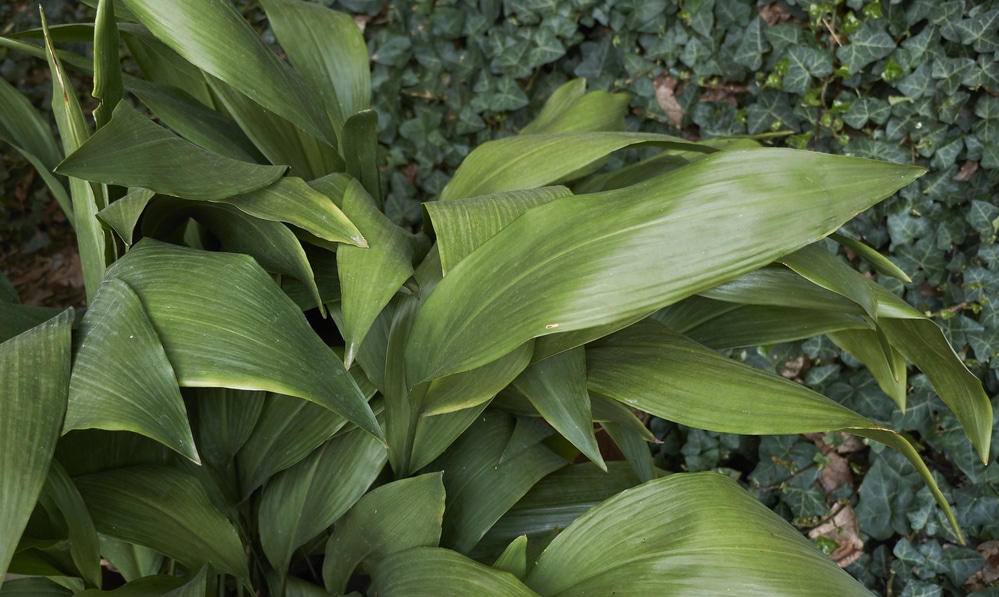
As the name implies, cast iron plants are known to be virtually indestructible and are perfect for gardeners with brown thumbs or beginning houseplant keepers. Slow-growing cast iron plants boast vibrant, lance-shaped leaves that add elegance to any room. Tolerant of low light situations, cast iron plants are resistant to most pests and require regular watering when the top 1 to 2” of soil is dry to the touch.
Lipstick Plant (Aeschynanthus humilis)
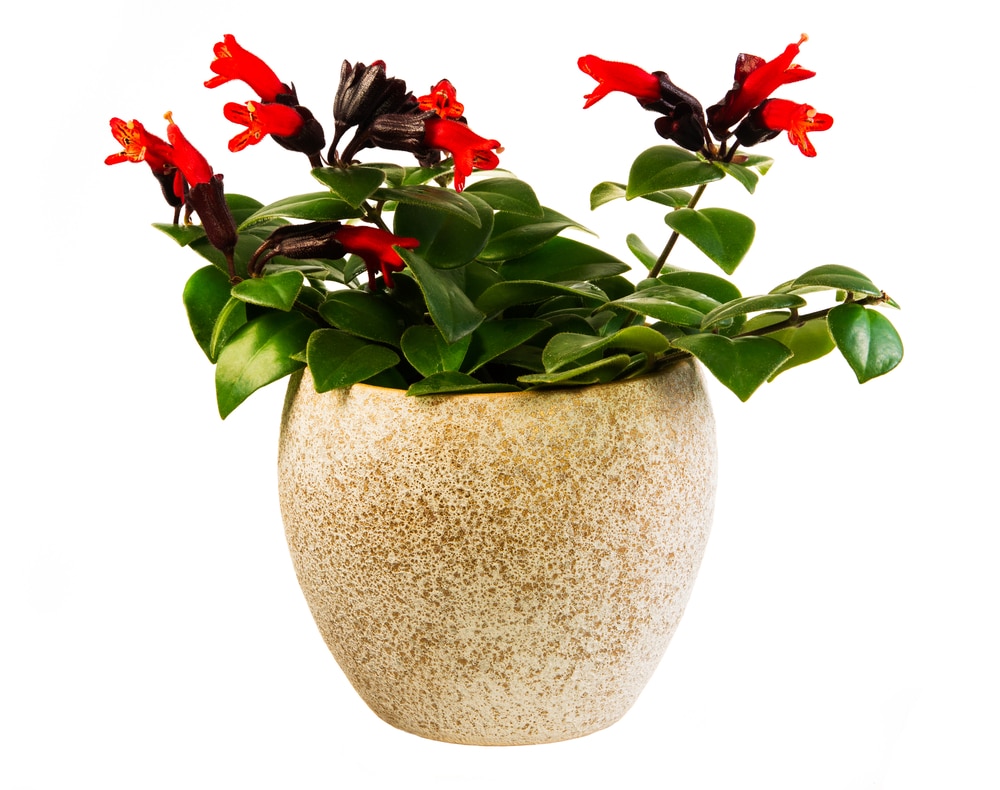
Lipstick plants are named after their brightly colored red flowers that extend from darker tubes that are said to resemble lipstick containers. Offering a trailing growth habit and glossy foliage, lipstick plants look particularly striking in hanging baskets where they can lend a pop of color to your window. Requiring monthly fertilizing and bright to medium filtered lighting, try increasing sunlight exposure to encourage flowering.
Venus Flytrap (Dionaea muscipula)
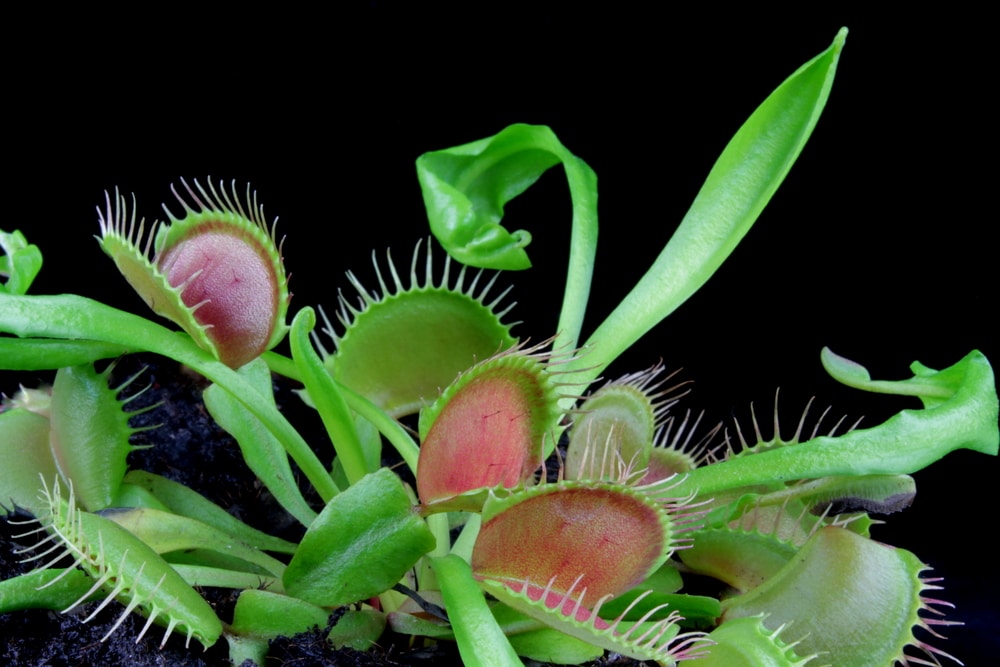
Carnivorous Venus flytraps are naturally found in the boggy areas of the coastal Carolinas where they feed on insects to supplement the nutrient-poor soil they grow in. When kept as houseplants, provide your Venus flytraps with bright, indirect light and high humidity levels of at least 50% humidity. Because they require high humidity, Venus flytraps are especially well-suited for terrariums, where they should be planted in a substrate specifically intended for carnivorous plants. Sensitive to chemicals found in tap water, water your Venus flytraps only with distilled or rainwater and never provide them with supplemental fertilizer. To avoid stressing your plants, do not touch their “traps,” as every time a trap is activated it expends valuable energy the plant needs to survive. Instead, feed your flytraps with live flies or gnats every month or so to provide your plants with the nutrients they need to grow healthy.
Burro’s Tail (Sedum morganianum)
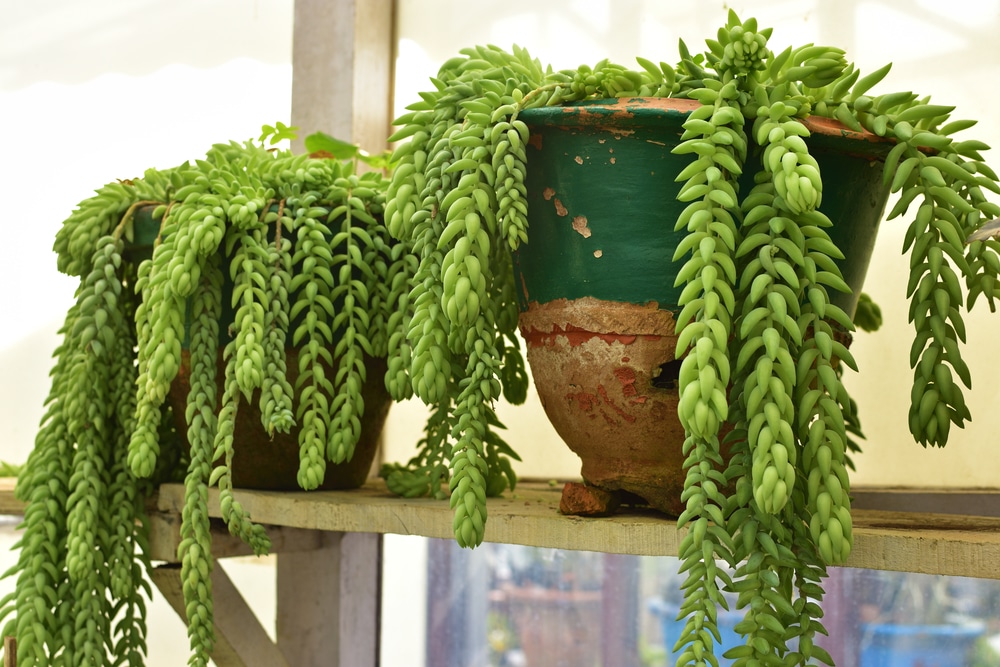
A succulent known for its trailing growth habit and fleshy leaves that appear to grow in a woven formation, burro’s tail is an easy-care plant that is sure to please. Perfect for hanging basket displays, this heat- and drought-tolerant plant requires bright light and minimal, monthly waterings.
Watermelon Peperomia (Peperomia argyreia)
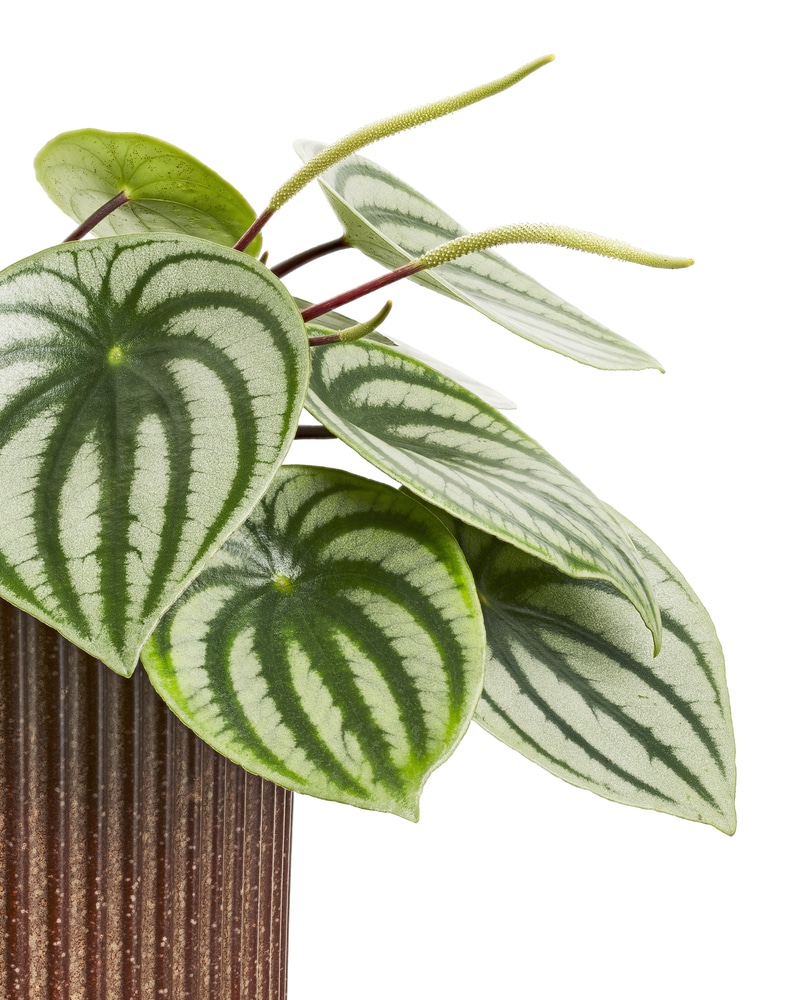
Watermelon peperomias are rapidly gaining popularity in the houseplant industry due to their interesting, shiny and patterned leaves that are said to resemble watermelons. A native of South America, watermelon peperomias have a compact growth habit and require bright, indirect light and average indoor humidity levels. If you notice your plant’s leaves beginning to show signs of deformation, try fertilizing your plant with a bit of calcium, such as can be found in crushed eggshells, which can help with proper improve leaf formation.
Polka Dot Plant (Hypoestes phyllostachya)
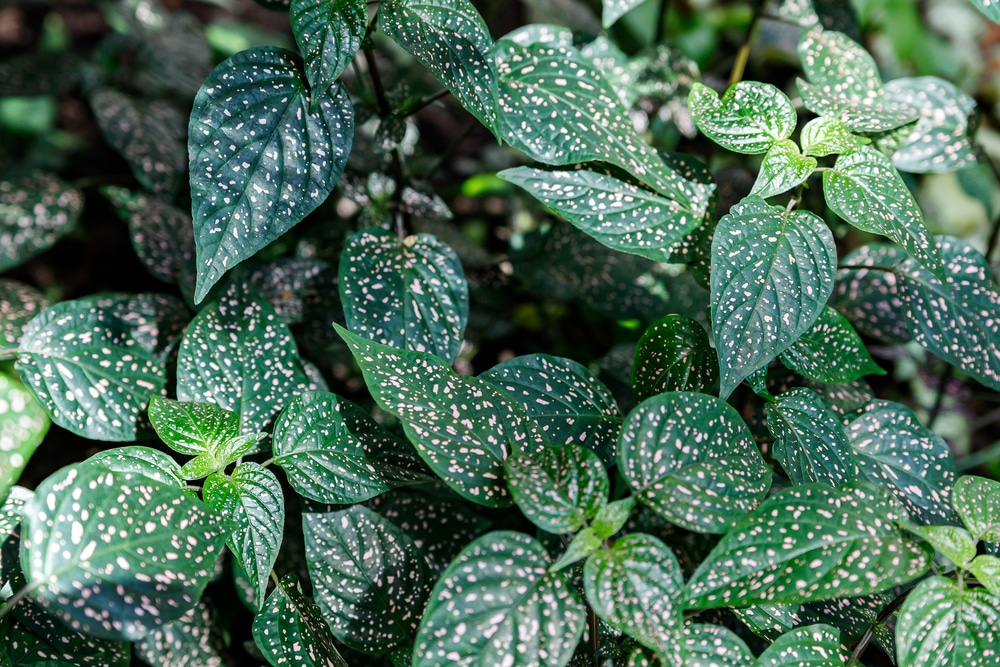
Similar to the nerve plant, polka dot plants are another adorable brightly colored, variegated houseplant that come in white, pink, purple and red. Requiring bright, indirect light and high humidity levels of at least 50%, try planting your polka dot plant in a terrarium to ensure adequate and consistent humidity levels.
California Pitcher Plant (Darlingtonia californica)
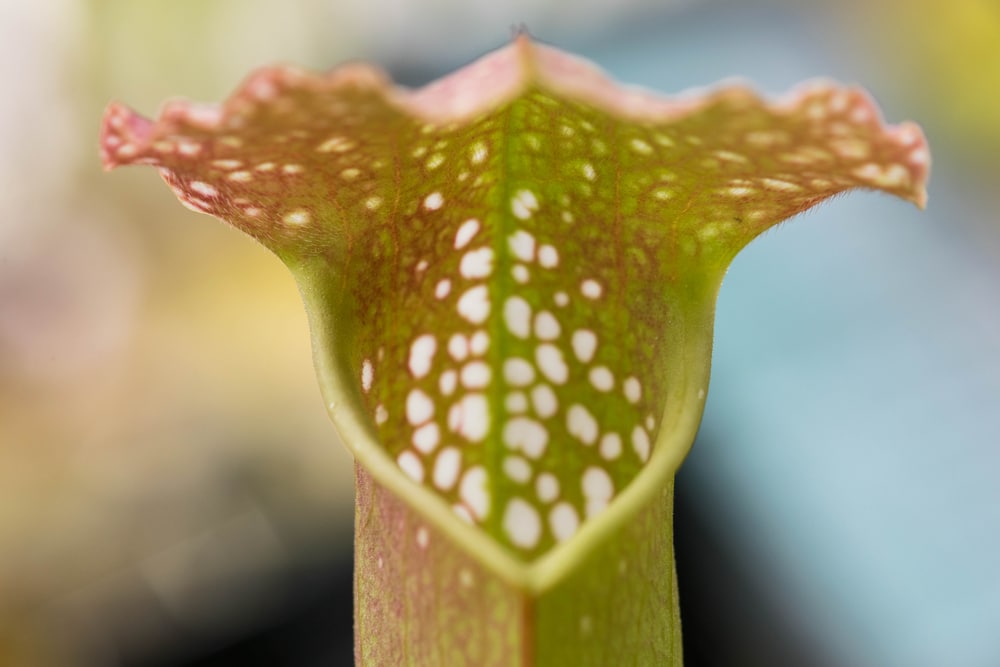
Another carnivorous plant native to the United States, pitcher plants naturally use their tunnel-shaped traps to catch insects, which help to supplement the nutrients they cannot get from the poor soil they grow in. Like Venus flytraps, pitcher plants should be planted in a potting mix especially suited for carnivorous plants and should not be fed with any supplemental fertilizer. Instead, provide your plants with bright, indirect light, only water with rain or distilled water and ensure your soil remains consistently moist, but not soggy.
Parlor Palm (Chamaedorea elegans)
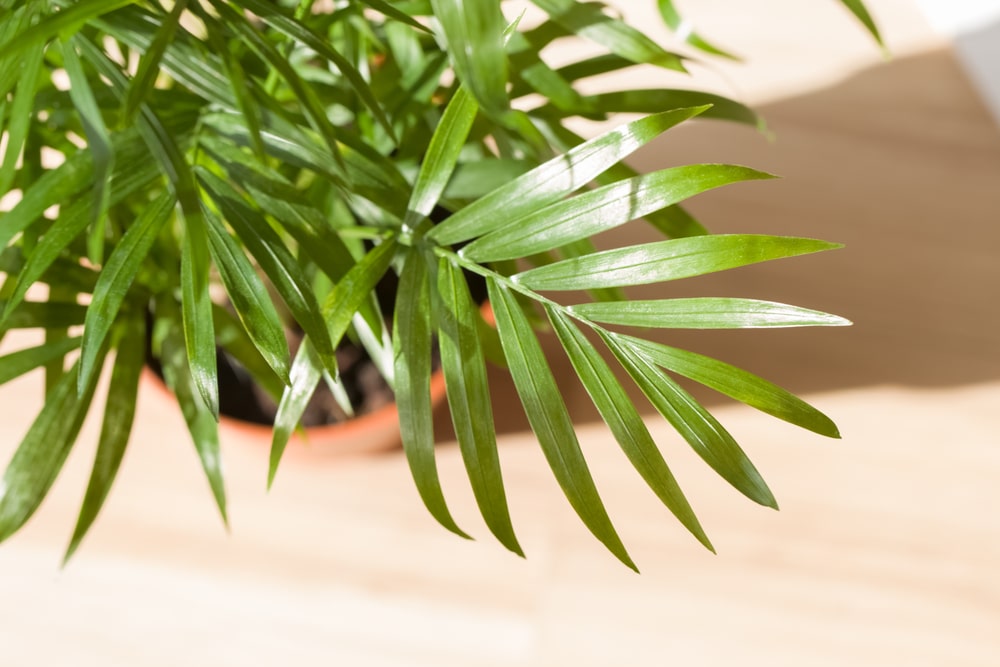
A native of Central America, parlor palms first became popular houseplants during the Victorian period when they were used to lend an elegant stateliness to parlors and sitting rooms. Today, they are valued as slow growing statement plants that can reach up to 6’ tall when grown as houseplants. Well-suited for growing in 3-gallon pots, parlor palms are sensitive to overwatering so ensure your pots are well-draining. Able to tolerate temperatures as low as 50°F and low light situations, these adaptable palms are well-suited for beginners. However, if you notice your palm’s leaves beginning to turn brown at the edges, you may want to increase humidity levels by adding a humidifier or a pebble tray to your setup.
Air Plants (Tillandsia spp).
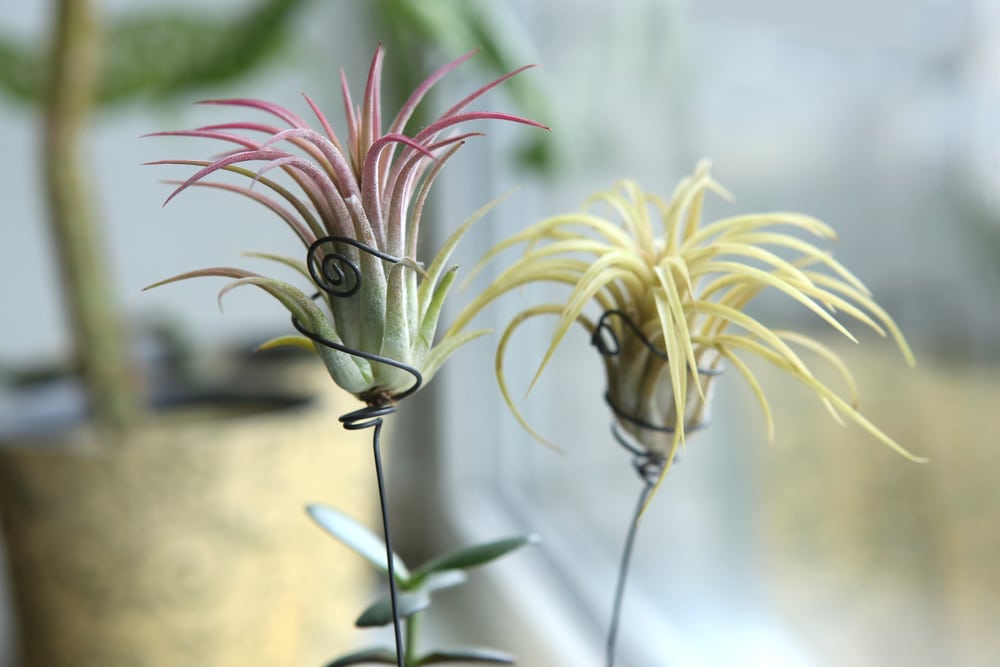
Air plants come in a range of shapes and sizes and all of them add fun and charm when used to accentuate your houseplant collection or home décor. Whether you place them on a shelf or hang them from a basket, air plants are easy to care for and require only bright, indirect lighting and adequate humidity levels. Only blooming once in their lifetimes, when your air plants do flower, expect brightly-colored, showstopping blooms.
Conclusion
Houseplant enthusiasts have long struggled with the difficulty of keeping plants in homes where curious pets reside. Pet-safety is certainly an issue of concern if you intend to keep houseplants; however, with a little bit of research and planning, you can be sure that you only purchase non-toxic plants that are safe to keep around pets and small children. Pet-safe houseplants come in a range of shapes, colors and growth habits and can include succulents, cacti and tropical plants. There is no need to feel that your houseplant collection needs to be limited because of your pet. Just do a bit planning, use this guide as a touchstone to make safe houseplant choices and you’ll be growing a pet-friendly indoor garden in no time.


Very useful info as I am planning to get a pet in the near future.